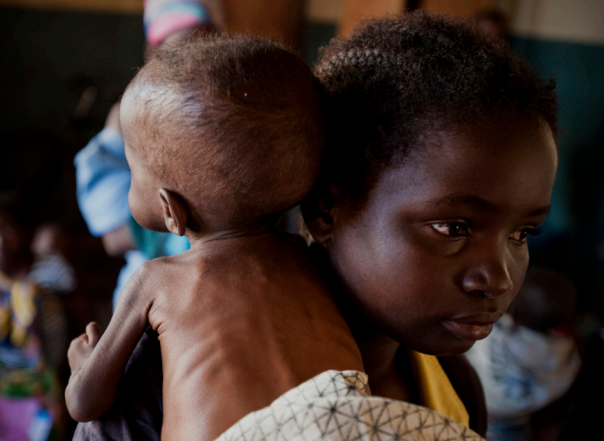
The UNICEF report titled ‘Severe Wasting: An overlooked child survival emergency’ explains that around one in five child deaths under the age of five can be attributed to severe wasting. Triggered by a lack of nutritious food and repeated bouts of disease such as diarrhoea, measles and malaria it compromises a child’s immunity.
Catherine Russell, executive director at UNICEF, said: “It is hard to put into words what it means for a child to be ‘severely wasted’. But when you meet a child who is suffering from this most lethal form of acute malnutrition, as I have, you understand -- and you never forget.
“Young children who have gone without food rapidly drop a lot of bodyweight, often exacerbated by bouts of infectious diarrhoea, until they become so thin and frail, they look skeletal. It is a distressing sight. Even more distressing is the knowledge that it is excruciatingly painful for the child whose body is battling the condition. Without lifesaving treatment, it is a battle that many lose.”
Life-saving nutrition
Unlike famine or starvation, relatively few people have heard of severe wasting, although it affects around 13.6 million children globally under the age of five, and is one of the leading underlying causes of preventable deaths in young children.
But even in stable countries, child wasting has been surging by more than 40 per cent. For example, in Uganda, child wasting has increased 61% since 2016. According to UNICEF these children need lifesaving, ready-to-use therapeutic food (RUTF), a high-calorie nut paste given as a medical treatment, which can literally mean the difference between life and death.
War in Ukraine
The Russian invasion of Ukraine has blocked supply lines and impacted global food security, threatening even more children with wasting.
The UN’s food agency suggests that a prolonged reduction of food exports could raise the global number of undernourished people by eight to 13 million people in 2022 and 2023. Moreover, food, fuel, and fertilizer shortages, combined with inflationary pressures, are causing prices to soar.
Urgent action needed
Russell added: “Already this year, many severely malnourished children have lost their fight for life. We can’t bring them back. And we can’t end global hunger and malnutrition overnight. But we can stop children dying from severe wasting right now.
“With strategic investment in proven, affordable ways to prevent and treat severe acute malnutrition we can save lives now – and work towards a world where no child wastes away and dies.”